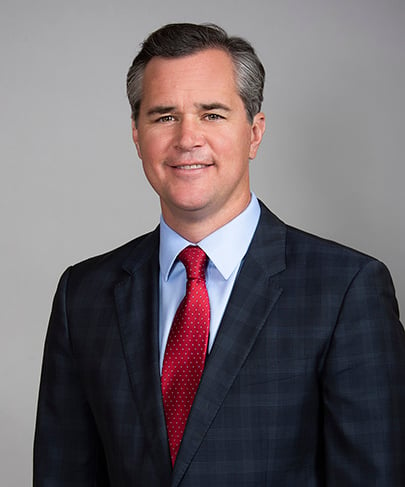New Ohio Power Siting Board Rules Take Effect May 30, 2024
DOWNLOAD PDFClick “Subscribe Now” to get attorney insights on the latest developments in a range of services and industries.
On May 20, 2024, the Ohio Power Siting Board (“Board” or “OPSB”) “final filed” its revisions to the administrative rules governing the siting of power generation[1]. After an intensive, multi-year stakeholder process, and significant input from industry groups such as the American Clean Power Association, Mid-Atlantic Renewable Energy Coalition, and the Utility Scale Solar Energy Coalition of Ohio, the rules take effect on May 30, 2024. We summarize the major changes below.[2]
The rules address all areas of the OPSB’s jurisdiction, but they make several updates to the siting requirements applicable to renewable generation projects, in particular solar-powered generation facilities. The new rules update the regulatory requirements for facilities during the pre-application, application, construction, and operation phases. Among other things, the new rules encourage more public involvement in the siting process, establish a new initial application fee, codify new technical siting criteria for certificate applications, and enhance incident monitoring and reporting, and certificate condition compliance requirements.
Pre-Application Public Notification Requirements (OAC 4906-3-03):
- Two Public Information Meetings: To foster greater public involvement in the siting process, the new rules require applicants to host two public informational meetings (PIMs), rather than one, for each certificate application near the project area. The first meeting must describe the scope of the project. The second meeting, held not more than 90 days before an application filing, would present the project to the public in a manner consistent with application. At the meetings, Applicants will need to provide aerial maps of the facility that allow searching capabilities. These maps and other PIM information would also need to be posted on the Applicant’s website before the PIM.
Application Fees (OAC 4906-3-12):
- The new rules require Applicants to pay an initial application fee to initiate the review of a standard certificate application of $10,000 when a case is opened. Following the OPSB’s completeness determination, the fee is “the product of fifty cents times the maximum kilowatt electric capacity,” as determined by the estimated net demonstrated capability of the highest capacity alternative. The maximum application filing fee remains at one hundred fifty thousand dollars.
Certificate Application Criteria (OAC Chapter 4906-4): Applicants are required to include specific information and studies as a part of their application submissions. The new rules generally codify what the Board has recently required in certificate conditions. Some of the major updates include:
Project Description Project Schedule in Detail (OAC 4906-4-03):
- Indicative Equipment Specifications: Requires Applicants to provide, “in as much detail as is available at the time of submission of the application,” indicative examples of each generation equipment alternative.
- Interactive Map: Applicant must provide an interactive map of the project and a 1-mile radius.
Project Area Selection and Site Design (OAC 4906-4-04):
- Public Involvement Summary: Requires applicants to describe the method of selection for the project area, including a description of “all public involvement” that was undertaken.
Economic Impact and Public Interaction (OAC 4906-4-06):
- Complaint Resolution Plan and Reporting: The rule aligns with recent Board certificate conditions and requires Applicants to file a complaint resolution plan with the OPSB, and to notify affected property owners and public officials of complaint resolution process prior to start of construction. Applicants would also file a complaint summary report by the fifteenth day of January and July of each year through the first five years of operation.
Health and Safety, Land Use, and Ecological Information (OAC 4906-4-08):
- Sound: Applicants are required to provide information on health and safety such as a description of anticipated noise from construction, operation, and maintenance of the facility, including an estimate of the nature of any “intermittent, recurring, or annoying sounds.”
- Preliminary Grading Plan: Applicants must now provide preliminary grading plan describing maximum graded acreage expectations.
- Geological Coordination with ODNR: Applicants must describe coordination with the Ohio Department of Natural Resources on geological suitability of project within the proposed site.
- Electric and Magnetic Fields: Applications for transmission must provide description of production of electric and magnetic fields where the centerline of the facility is within one hundred feet of an occupied residence or institution, and for electric substations where the boundary of the footprint is within one hundred feet of an occupied residence or institution.
- Ecological Information: Applicant to provide information on ecological resources such as the proposed facility and limits on disturbance, areas of proposed vegetative clearing, naturally occurring woods and herbaceous vegetation land, and sensitive habitats.
- Surface Waters: Applicant to provide description of probable impact of construction on the vegetation and surface waters, including impacts from route/site clearing and grading, and disposal of vegetation, including the linear feet and acreage impacts, and the proposed crossing methodology of each stream and wetland to be crossed by any part of the facility during construction.
- Mitigation of Adverse Cultural Impacts: Applicant to provide information on cultural and archaeological resources such as description of studies on cultural resources within proposed site, a description, evaluation, and mitigation plan for the impact the site will have on recreational and scenic areas.
- Agricultural Impacts: Applicants to provide information on agricultural districts such as a description of irrigation systems, field drainage systems, agricultural structures that will be removed or replaced, anticipated soil impacts, and identifying all properties enrolled in CAUV.
- Drain Tile Considerations: Applicants must describe and map field drainage systems and demonstrate how impacts to those systems will be avoided or mitigated, describe how damaged drainage systems including field tile mains and laterals will promptly be repaired to restore original drainage conditions, and describe the data sources and methods used to obtain information for field drainage system mapping.
Regulations Associated with Renewable Energy Generation Facilities (OAC 4906-4-09):
The Board crafted new regulations which only apply to renewable energy generation facilities. “Renewable energy facility” is not defined in the new rules but we understand that the term is intended to include to wind, solar and energy storage projects. Changes to regulations of renewable energy generation facilities only apply to applications filed after the effective date of new rule. The Board also further codified specific new requirements applicable to solar or wind.
- Noxious Weeds: Applicants are required to prevent the establishment and propagation of noxious weeds including in its setback areas, during construction, operation, and decommissioning in accordance with project’s vegetation plan. The Applicant would to provide annual proof of weed control for the first four years of operation, with the goal of weed eradication significantly completed by year three.
- Environmental Specialist: Requires applicants to have a Staff-approved environmental specialist on site during construction activities that may affect sensitive areas. The environmental specialist must be familiar with water quality protection issues and potential threatened or endangered species of plants and animals that may be encountered during project construction. . The environmental specialist shall have authority to stop construction at the location where a sensitive impact is unexpectedly encountered for up to 48 hours after any reported to OPSB Staff to mitigate unforeseen environmental impacts and to recommend procedures to resolve the sensitive impact.
- Sound Standard: Specifies that facilities must be operated so that its daytime and nighttime noise contributions do not result in noise levels that “exceed the greater of 40dBA or the project area’s ambient daytime and nighttime average sound level (L50) by five A-weighted decibels (dBA).”
- Solar Requirements: Requires applications for solar facilities to meet the following requirements:
- Setback from Solar Modules: The facility design is to incorporate a minimum setback from the project’s solar modules of (i) at least 50 feet from non-participating parcel boundaries, (ii) at least 300 feet from non-participating residences existing as of the application filing date, and (iii) at least 150 feet from the edge of pavement of any state, county, or township road within or adjacent to the project area.
- High Wind: Solar facility applicants will provide an analysis of high wind velocities for the area, including the probability of occurrences and likely consequences of various high wind velocities, and describe plans, approved by a professional engineer, to mitigate any likely adverse consequences.
- Storm Water Controls: Applicants are required to construct the facility in a manner that considers the Ohio EPA’s guidance on post-construction storm water controls for solar panel arrays. The Applicant would develop and implement a stormwater pollution prevention plan, a spill prevention control and counter measure plan, and a horizontal directional drilling inadvertent release of drilling fluid contingency plan to minimize and prevent potential discharges to surface waters in the project area and surrounding area.
- Perimeter Fencing: Solar panel perimeter fence type must be both small-wildlife permeable and aesthetically fitting for a rural location.
- Landscape Plan: Applicant must provide a landscape plan in consultation with landscape architect licensed by the Ohio Landscape Architects Board that reasonably mitigates the aesthetic impacts of the facility on adjacent residential non-participating properties, the traveling public, nearby communities, and recreationalists through measures such as shrub plantings or enhanced pollinator plantings and be in harmony with the existing vegetation and viewshed in the area.
- Wind Facility Requirements: Requires applications for wind facilities to meet the following additional requirements:
- Microwave Path Study: At least thirty days prior to the preconstruction conference, applicants must conduct a microwave path study that identifies all existing microwave paths that intersect the wind farm project, and a worst-case Fresnel zone analysis for each path. A copy of this study shall be provided to the path licensee(s), for review, and to staff for review and confirmation that the applicant is complying with this condition.
Condition Compliance Monitoring and Reporting:
With an eye towards compliance with certificate conditions and the Board’s rules, the rules include new monitoring and reporting requirements.
Annual Reporting Requirements for Electric Generation Facilities (OAC 4906-7-04):
- Annual Reporting: By April 30 for the first three years after a generation facility certified by the Board begins commercial operation, the certificate holder must docket an annual report addressing information for the calendar year preceding the date of the report. Such annual reports could include a description of facility status, monitoring and mitigation activities, condition compliance, facility modifications, surety information, and incident reporting.
- Subsequent Reports: For each subsequent year after year three, the certificate holder may either file a letter stating that the most recently filed report reflects the current conditions or file a new report.
Reporting Violations (OAC 4906-7-05):
- Report Violations: Certificate holders are required to docket a written report of any violation of ORC 4906.98 within 30 days of its discovery. The report would include a description of the violation, actions taken to address the violation, and plans to avoid future similar violations.
Self-Reporting of Incidents for Solar Electric Generation Facilities (OAC 4906-7-06): The new reporting requirements for solar facilities are similar to those already in place for wind farms.
- Notify OPSB and First Responders: Requires facility operators to notify OPSB and first responders when there is an injury to any person that requires medical treatment “beyond first aid,” when there is damage to property other than the property leased or owned by facility, or damage to facility operator’s property that is estimated to exceed $50,000.
- Written Report: Requires facility operator to submit a written report to OPSB within 30 days describing cause of incident and any damage to facility or neighboring property or person.
- Construction Restart Procedure: Specifies that a facility involved in a reportable incident described above shall not restart or resume construction of any damaged property within the facility until such action is approved by OPSB. Rule also creates presumption that equipment can be re-started within 5 days of repair unless OPSB staff affirmatively objects.
Compliance Site Review (OAC 4906-7-07):
- Staff Inspection: Requires each certificate holder to allow properly identified representatives of the Board, including, but not limited to, compliance staff or its contractors, to inspect the operations of a certificated facility at any time.
- Prior Notice: Specifies, when practical, inspections will occur with prior reasonable notice to the certificate holder such that its representative may accompany compliance staff during any inspection conducted under this rule.
[1] Ohio Administrative Code Chapters: 4906-1, 4906-2, 4906-3, 4906-4, 4906-5, 4906-6, and 4906-7
[2] The rules package is accessible on the JCARR agenda available here: https://www.jcarr.state.oh.us/assets/committees/joint-committee-on-agency-rule-review/meetings/5-13-2024/files/final-regular-agenda-may-13-2024-137864.pdf. The rules package will be available after the new rules go into effect and the Legislative Service Commission makes that update at the following web link: https://codes.ohio.gov/ohio-administrative-code/4906.
Related Practices
Contacts
Recent Insights
- Industry Alerts Ohio Supreme Court Unanimously Affirms Siting Board Certificate for New Wind Farm
- Industry Alerts Ohio Legislature Adopts New Wind and Solar Siting Law S.B. 52 Requires County Commission Approval
- July 18, 2024 In the News Michael Vogt's article, "Michigan’s New Clean Energy Siting Law Surges Ahead," was published by the State Bar of Michigan Real Property Law Section eNewsletter.
- August 10, 2023 In the News Sharon O. Jacobs Joins Dickinson Wright Nashville Office
- July 05, 2023 Industry Alerts Ohio Extends Clean Energy “Payment in Lieu of Tax” Program for Four Additional Years
- July 08, 2022 Industry Alerts Ohio Legislature Adopts New Protections for Solar Access for Homeowners
- June 01, 2021 Industry Alerts Final Minimum Risk Levels for PFAS: What Do They Mean?
- November 9, 2020 In the News Dickinson Wright Secures Federal Regulatory Exemption for Hillcrest Solar I, LLC
- August 03, 2020 Industry Alerts Contemplating a Repeal of Ohio House Bill 6: The Practical Effects of Hitting Reset on Ohio Energy Policy





